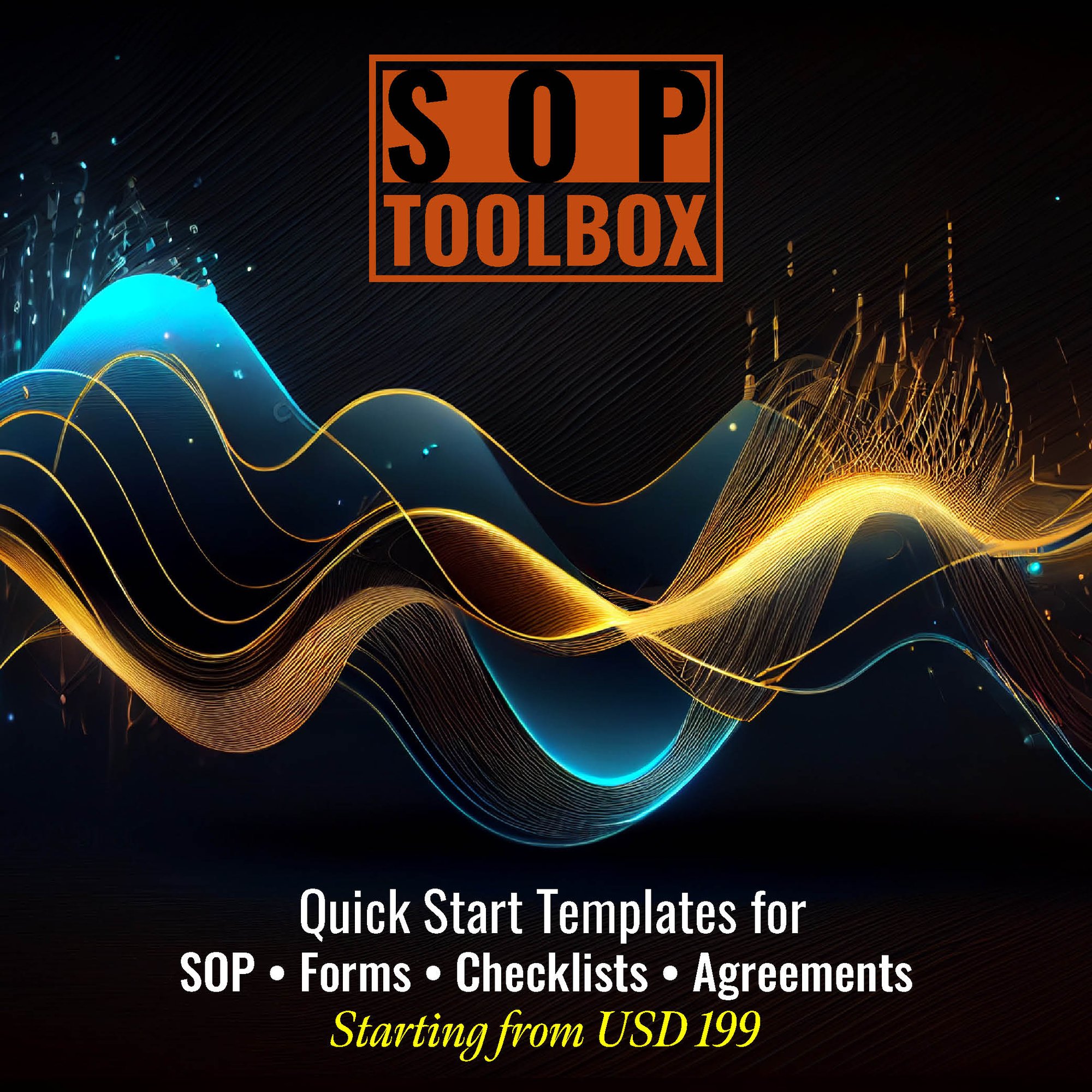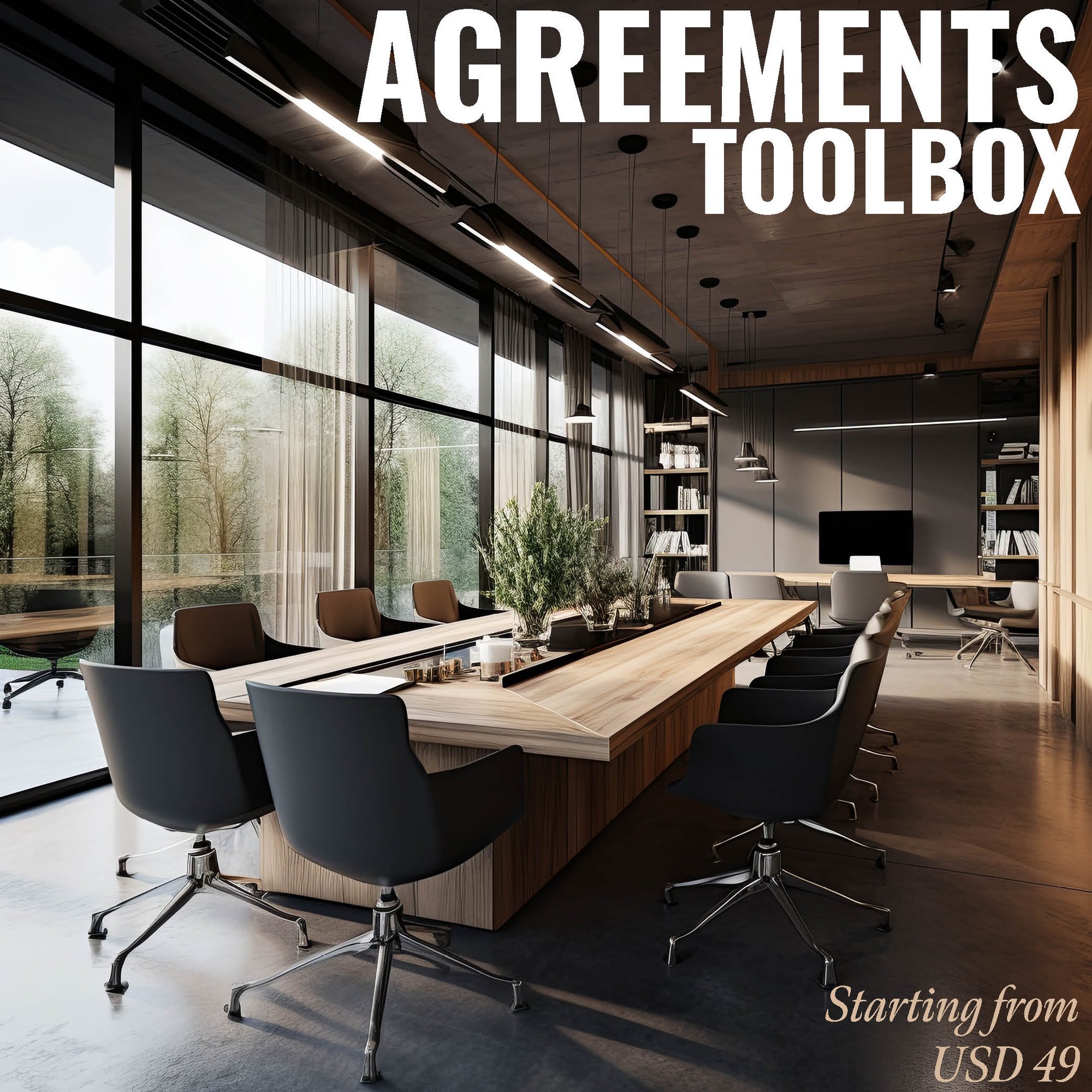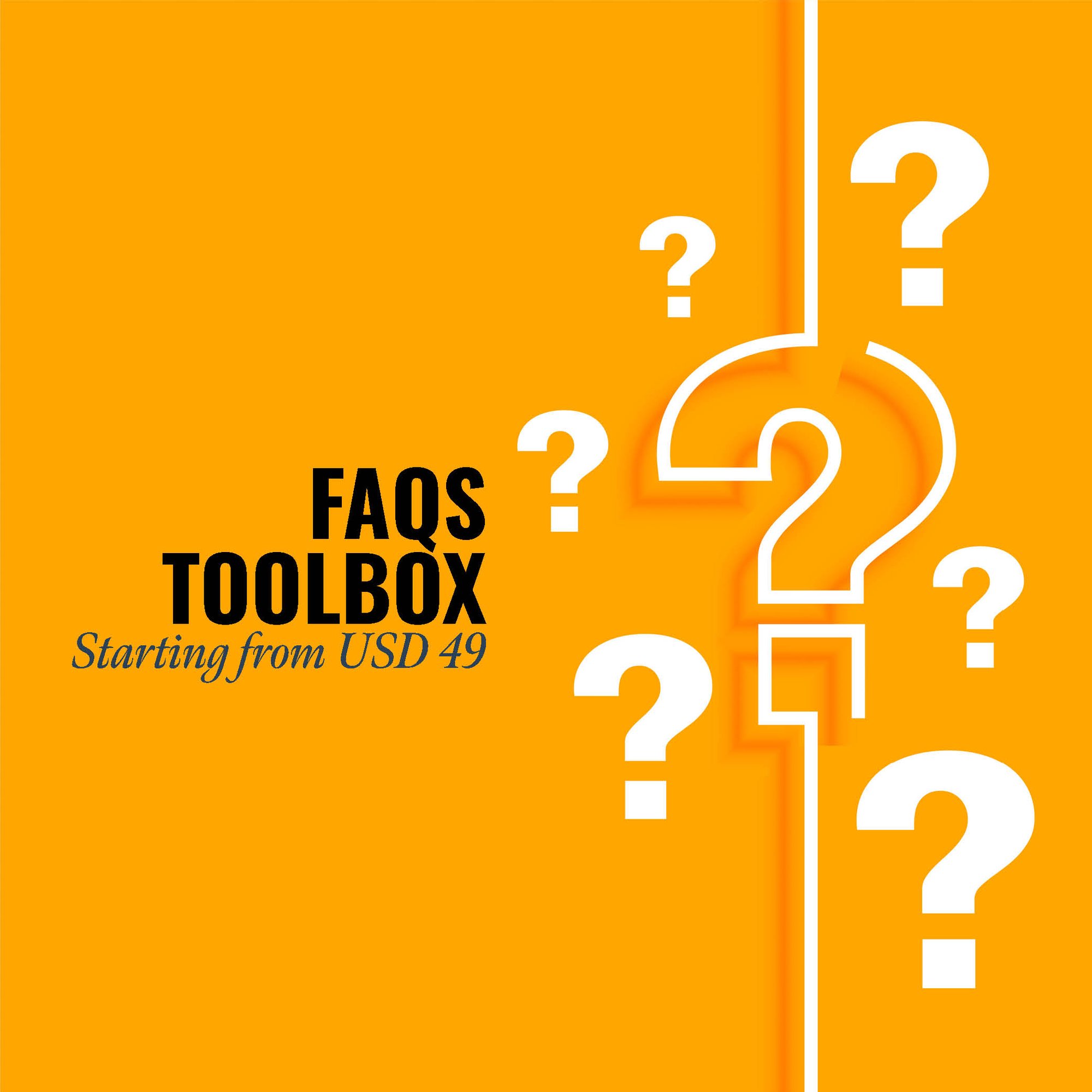The consequences of an "SOP Manual for Administration of Urban Planning and Community and Rural Development" are far-reaching and significant, impacting both urban and rural areas in numerous ways.
First and foremost, this manual serves as a blueprint for effective governance and sustainable development. By providing standardized procedures and guidelines, it ensures that urban planning and community development initiatives are well-organized and efficient. This results in improved infrastructure, housing, and public services for urban areas, enhancing the quality of life for residents.
In rural areas, the manual facilitates responsible development and resource allocation. It supports the creation of infrastructure for education, healthcare, and agriculture, thereby reducing disparities and promoting economic growth.
Furthermore, the manual helps in achieving environmental sustainability by guiding the planning of green spaces, public transportation, and waste management, reducing pollution and conserving resources.
Overall, the "SOP Manual for Administration of Urban Planning and Community and Rural Development" has positive consequences on urban and rural communities alike, fostering growth, equity, and sustainability.
CLICK HERE to download the List of SOPs Document in PDF format. Please share this document with your clients, colleagues and senior officers.
Top 50 SOPs for Standard Operating Procedures (SOPs) for Administration of Urban Planning and Community and Rural Development
SOP-780-001: Standard Operating Procedure for Project Initiation and Scope Definition
SOP-780-002: Standard Operating Procedure for Stakeholder Engagement and Communication
SOP-780-003: Standard Operating Procedure for Site Analysis and Assessment
SOP-780-004: Standard Operating Procedure for Zoning and Land Use Planning
SOP-780-005: Standard Operating Procedure for Infrastructure Planning and Design
SOP-780-006: Standard Operating Procedure for Environmental Impact Assessment
SOP-780-007: Standard Operating Procedure for Budgeting and Financial Planning
SOP-780-008: Standard Operating Procedure for Grant and Fund Management
SOP-780-009: Standard Operating Procedure for Regulatory Compliance
SOP-780-010: Standard Operating Procedure for Permitting and Licensing
SOP-780-011: Standard Operating Procedure for Community Engagement and Participation
SOP-780-012: Standard Operating Procedure for Social Impact Assessment
SOP-780-013: Standard Operating Procedure for Housing and Shelter Planning
SOP-780-014: Standard Operating Procedure for Transportation Planning
SOP-780-015: Standard Operating Procedure for Public Space Design and Management
SOP-780-016: Standard Operating Procedure for Disaster Preparedness and Management
SOP-780-017: Standard Operating Procedure for Data Collection and Analysis
SOP-780-018: Standard Operating Procedure for GIS Mapping and Spatial Analysis
SOP-780-019: Standard Operating Procedure for Monitoring and Evaluation
SOP-780-020: Standard Operating Procedure for Project Reporting \
SOP-780-021: Standard Operating Procedure for Quality Assurance and Control
SOP-780-022: Standard Operating Procedure for Capacity Building and Training
SOP-780-023: Standard Operating Procedure for Performance Metrics and KPIs
SOP-780-024: Standard Operating Procedure for Public-Private Partnerships
SOP-780-025: Standard Operating Procedure for Urban Redevelopment
SOP-780-026: Standard Operating Procedure for Heritage Preservation
SOP-780-027: Standard Operating Procedure for Affordable Housing Programs
SOP-780-028: Standard Operating Procedure for Rural Infrastructure Development
SOP-780-029: Standard Operating Procedure for Agricultural Planning
SOP-780-030: Standard Operating Procedure for Sustainable Energy Planning
SOP-780-031: Standard Operating Procedure for Waste Management and Recycling
SOP-780-032: Standard Operating Procedure for Water Resource Management
SOP-780-033: Standard Operating Procedure for Health and Sanitation Planning
SOP-780-034: Standard Operating Procedure for Education Infrastructure Planning
SOP-780-035: Standard Operating Procedure for Technology and Innovation Integration
SOP-780-036: Standard Operating Procedure for Community Empowerment Programs
SOP-780-037: Standard Operating Procedure for Conflict Resolution
SOP-780-038: Standard Operating Procedure for Public Safety Planning
SOP-780-039: Standard Operating Procedure for Transportation Infrastructure Maintenance
SOP-780-040: Standard Operating Procedure for Disaster Recovery and Rehabilitation
SOP-780-043: Standard Operating Procedure for Land Acquisition and Resettlement
SOP-780-044: Standard Operating Procedure for Housing Finance and Subsidies
SOP-780-045: Standard Operating Procedure for Community Health and Well-being
SOP-780-046: Standard Operating Procedure for Climate Change Adaptation
SOP-780-047: Standard Operating Procedure for Smart City Integration
SOP-780-048: Standard Operating Procedure for Cross-Border Planning and Collaboration
SOP-780-049: Standard Operating Procedure for Public Art and Cultural Planning
SOP-780-050: Standard Operating Procedure for Tourism and Recreation Development
SOP ToolBox: If you are reading these lines, I am sure you are looking for Standard Operating Procedure guidelines or SOPs itself. In both the cases, searching in internet will not be yielding any great help. Because no company shares their SOP Development Process and certainly don’t share their SOP Documents. The best way to develop an SOP is creating one for yourself. At Fhyzics, we write SOPs day-in and day-out for companies across the globe including some of the Fortune 500 organisations. Our charge ranges from USD 5000 to USD 50000 depending upon the number of processes to be covered. Certainly, this is not affordable to small and mid-size organisations. Hence, we decided to create this SOP ToolBox to disseminate our 8-Step SOP Development Life-Cycle and best practices at an unbelievably low price.
I always say, writing an SOP is somewhere between art and science. So far you may be clueless on where to start and how to progress on an SOP? This will not be the case after you diligently go through this SOP ToolBox. We have summarised all our secrets here to get you started and to deliver a stunning SOP to your management.
-
Community development agencies, government
-
County development agencies
-
Land redevelopment agencies, government
-
Redevelopment land agencies, government
-
Regional planning and development program administration
-
Urban planning commissions, government
-
Zoning boards and commissions
1. Standard Operating Procedures (SOP) Manual for Accounts Department
2. Standard Operating Procedures (SOP) Manual for Finance Department
3. Standard Operating Procedures (SOP) Manual for Customer Service
4. Standard Operating Procedures (SOP) Manual for CRM Department
5. Standard Operating Procedures (SOP) Manual for Credit Department
6. Standard Operating Procedures (SOP) Manual for Treasury Department
7. Standard Operating Procedures (SOP) Manual for Human Resources (HR) Department
8. Standard Operating Procedures (SOP) Manual for Training Department
9. Standard Operating Procedures (SOP) Manual for Learning & Development Department
10. Standard Operating Procedures (SOP) Manual for Administration Department
11. Standard Operating Procedures (SOP) Manual for Front Office
12. Standard Operating Procedures (SOP) Manual for House Keeping
13. Standard Operating Procedures (SOP) Manual for Safety Department
14. Standard Operating Procedures (SOP) Manual for Security Department
15. Standard Operating Procedures (SOP) Manual for Facilities Management Department
16. Standard Operating Procedures (SOP) Manual for Vigilance Department
17. Standard Operating Procedures (SOP) Manual for Legal Department
18. Standard Operating Procedures (SOP) Manual for Information Technology (IT) Department
19. Standard Operating Procedures (SOP) Manual for Sales & Marketing Department
20. Standard Operating Procedures (SOP) Manual for Design & Engineering
21. Standard Operating Procedures (SOP) Manual for Procurement Department
22. Standard Operating Procedures (SOP) Manual for Production
23. Standard Operating Procedures (SOP) Manual for SRM Department
24. Standard Operating Procedures (SOP) Manual for Supply Chain Department
25. Standard Operating Procedures (SOP) Manual for Warehouse
26. Standard Operating Procedures (SOP) Manual for New Product Development Department
27. Standard Operating Procedures (SOP) Manual for Research and Development
28. Standard Operating Procedures (SOP) Manual for Quality Department
29. Standard Operating Procedures (SOP) Manual for Calibration Department
30. Standard Operating Procedures (SOP) Manual for Maintenance Department
Development per se is oriented towards change in a desired direction. Thus, development administration is change-oriented and rejects status quo. Every development function has a goal to be achieved, i.e. economic development has the goal to improve the quality of life such as rise in per capita income, literacy rate, life expectancy and reduction in poverty rates. For the goals to be achieved, to relate the means to ends, planning and temporal dimension becomes a salient feature of development administration. Planning aids in deciding the resources required for achieving the goal, and the time in which it needs to be achieved. Development ultimately aims at the people, hence, it should accord primacy to the public, and i.e. the administration should be client-oriented. For the development functions to be effective and people-oriented, participation of people is emphasized in formulating and implementing plans, and sharing the benefits derived. Thus, development administration should focus on "planning with and for people" rather than "planning for people". It should be pople-centered rather than simply production-cantered, i.e. not only for maximizing production of goods and services but also for addressing the needs of people and thus to empower them. While development administration is concerned with plans, policies, programmes and projects which focus on nation-building and socio-economic development, administrative development is rather concerned with increasing and improving the capabilities of administrative system. The later involves modernization of administrative structure, capabilities of personnel, attitudinal and behavioural changes among the administrators. But, all these are done as a part-of the former. Development administration has an innovative dimension; it is flexible-enough to design new methods, procedures, policies which would save time, increase effectiveness and quality. Administrators under this concept are required to be committed to the policies, plans and programmes. The commitment is not necessarily to the political parties, who enact the policies, but to the values that an administrator should uphold in hasher profession to promote administration of development as well as administrative development.
- The integrated nature of rural society:
Most rural societies are relatively 'integrated', in the sense that the various components of life (eg. agricultural and non-agricultural, 'economic', 'social' end 'political', religious and secular) are closely interrelated. Rural people do not easily recognize the distinctions which planners, extension workers and other government officials make between, for example, the responsibilities of different agencies or 'economic' and 'social' planning, because in their own lives all these things affect each other. This is why an integrated approach to planning is essential at this level and why projects or programmes which are planned from only one point of view (e.g. the 'agricultural' or the 'economic') frequently fail because they do not take account of other related aspects.
- The importance of the natural resource base:
Most people in rural areas are dependent directly or indirectly on the natural resources of the area for their livelihood. Most rural planners, and especially agricultural planners, recognize this, and thus emphasize the importance of agricultural development activities. However, sometimes they do not appreciate its full implications. They do not always realize the intricate nature of the relationship between the people and their environment, which has evolved over centuries and is reflected in all aspects of life, not merely those directly related to agricultural production.
Since agricultural projects and programmes almost inevitably involve some change in this relationship between people and environment, they will only be successful if all aspects of the present relationship are taken into consideration in the planning stage. This does not mean that the existing relationship is the best one, or that there is always a 'natural' balance between human activities and the environment. In many cases, this is not so, and that is often why some sort of intervention is necessary. It merely means that one cannot introduce change without considering all the aspects or implications of the change, and that means understanding the full nature of the relationship between people and environment.
Research By : Eshwaran Murugappan
Please click here to review the SOP Templates’ Terms & Conditions.
Keywords: sop, manual, policy, sop meaning, sop full form, standard operating procedure, full sop, user manual, sop is, user guide, instruction manual, owners manual, sample sop, operators manual, sop example,standard operating procedure examples, abbreviation sop, standard operating procedure sample, milk sop, sop document, sop process,m manual, operating procedures, operating process, sop meaning in hindi, standard procedure, sop standard operating procedure, sop top, sop writing, standard operating procedures manual, sop meaning in english, sample sop for mba, standard operating procedures examples in office, product manual, sample sop for ms, maintenance manual, sop security, sop in research, sop in business, whats sop, standard of operation, sop set, sop procedure, sop marketing,sop training, sop hotel, sop, sop meaning business, sop form, sba sop,sop software, help manual, sop it, army sop, company sop, sop sap, o m manual, standard operating procedure examples for small business, shop manual, sop manual, sop meaning in business, purpose of standard operating procedures, sop full meaning, standard operating procedure meaning, sop military, sop standard, sop meaning medical, hr sop, sop production, purpose of sop, sop management, warehouse sop, sales sop, sop pharma, sop manufacturing, sop creation, sop laboratory, ms sop, sop full form in hindi, sop front office, sop customer service, sop online, gmp sop, sop purchasing, sop pharmacy, sop safety, sop for project management,sample sop for australian student visa, sop meaning in tamil, sop system, best sop, sop up, sop in english, sop for mechanical engineering, sop for university,sop in malay, sop lab, sop for business analytics, sop model, sop in pharmacy, developing sops, standard operating procedure examples manufacturing, sop full form in retail,sop full form in medical, sop engineering, sop application, writing standard operating procedures, procurement sop, sop maintenance,standard operating procedure nhs, sop clinical trial, sop operations,sop in construction, operating procedures manual, standard operating procedure ppt, standard procedure meaning, sop ppt, a sop, sop document meaning, sop def, sop full form in safety, sop quality control, sop for college, sop quality, sop service, types of sop, sop for engineering management, sop document sample, benefit of sop, preparing sop, standard operating procedure in hindi, sop for visa, sop compliance, sop protocol, sop aviation, sop meaning in chat, standard operating process, sop meaning military, sop for business management, standard operating procedure software, sop list, sop medical, sop logistics, sop project, sop for it department, sop call center, standard work procedures, sba sop 50 10, sop meaning in logistics, standard operating procedure laboratory, test sop, sop sample for ms, drafting sop, sops meaning in tamil, sops meaning in telugu, sop automotive, standard operating system, sop cafe, sop slideshare, sop ap, sop bank, sop in retail, creating standard operating procedures, sop admin, document control sop, pharmaceutical sop,sop in pharmaceutical industry, statement of purpose harvard, sop examples for ms, quality assurance sop, sop in clinical research, nursing sop, sop for transportation, sop policies, sops are specific to a process, sop in hindi, standard operating procedure for warehouse picking, master sop, list of sop for pharma, pharmaceutical sop examples, types of standard operating procedures, retail sop, sample sop for ms in mechanical engineering, standard operating protocol,sop supply chain, system operating procedure, sop rules, example of sop in research, sop in food industry, sop for international business management, sop for hospitality management, sop for hr department, army sop example, sop standard operating, office sop, hr standard operating procedures, preventive maintenance sop, sop for purchase department, human resources sop, fire department sops, information technology sop, operating procedure example, administration sop,sop for retail store, indian sop, construction management sop, sop hotel front office, example sop document, standard and procedures,working sop, sop for maintenance department, sop hrd department,sop full form in hotel industry, sop full, sop for human resource management, laboratory sop examples, standard operating procedure for quality control, sop for ms in mechanical engineering, sop meaning army, security standard operating procedures, sop machine, sample sop for internship, sop for hotel management, sample sop for masters, qa sop, developing standard operating procedures, standard operating procedure document, product recall sop, marketing statement of purpose, it standard operating procedures, equipment sop, sop purpose example, sop shipping, sop for sales and marketing,converting pos to sop, workshop sop, standard operating procedure manufacturing, digital marketing standard operating procedures, following standard operating procedures, sop ki full form, sop for nursing procedures, an sop, purchase sop for manufacturing company, sop a, statement of purpose for mba marketing, full meaning of sop, sop for research internship, research sop sample,vendor qualification sop, sop purchasing and receiving, sop meaning in visa, sop for admission, standard operating procedure medical office, sop in industry, sop sales marketing, navy sop, project management standard operating procedures, sop it support, standard operating manual, security operating procedures, statement of purpose for international business, procurement standard operating procedures, communication sop, sop full form in pharma, minimum sop, sop health and safety, product sop, sop for marketing department, sop in medical terms, sales standard operating procedure, sop purchase order, department sop, customer service standard operating procedures, clinical sop, marketing standard operating procedure, sop standard operating procedure example, construction standard operating procedures, standard of operations procedures manual sample, sop for facility management, sop full form in education, standard operating procedure in food industry, visa sop,sop for business administration, company sop meaning, sop work, sop operating procedure, sop for summer internship in engineering sample, general administration sop, sop for administrative duties.
Our SOP Templates’ clients are from the following States and Countries:
Alabama, Alaska, Arizona, Arkansas, California, Colorado, Connecticut, Delaware, Florida, Georgia, Hawaii, Idaho, Illinois, Indiana, Iowa, Kansas, Kentucky, Louisiana, Maine, Maryland, Massachusetts, Michigan, Minnesota, Mississippi, Missouri, Montana, Nebraska, Nevada, New Hampshire, New Jersey, New Mexico, New York, North Carolina, North Dakota, Ohio, Oklahoma, Oregon, Pennsylvania, Rhode Island, South Carolina, South Dakota, Tennessee, Texas, Utah, Vermont, Virginia, Washington, West Virginia, Wisconsin, Wyoming.
Afghanistan, Albania, Algeria, Andorra, Angola, Antigua and Barbuda, Argentina, Armenia, Australia, Austria, Azerbaijan, Bahamas, Bahrain, Bangladesh, Barbados, Belarus, Belgium, Belize, Benin, Bhutan, Bolivia, Bosnia and Herzegovina, Botswana, Brazil, Brunei Darussalam, Bulgaria, Burkina Faso, Burundi, Cabo Verde, Cambodia, Cameroon, Canada, Central African Republic, Chad, Chile, China, Colombia, Comoros, Congo (Republic of the), Costa Rica, Croatia, Cuba, Cyprus, Czech Republic (Czechia), Democratic People’s Republic of Korea (North Korea), Democratic Republic of the Congo, Denmark, Djibouti, Dominica, Dominican Republic, Ecuador, Egypt, El Salvador, Equatorial Guinea, Eritrea, Estonia, Eswatini, Ethiopia, Fiji, Finland, France, Gabon, Gambia, Georgia, Germany, Ghana, Greece, Grenada, Guatemala, Guinea, Guinea-Bissau, Guyana, Haiti, Honduras, Hungary, Iceland, India, Indonesia, Iran, Iraq, Ireland, Israel, Italy, Jamaica, Japan, Jordan, Kazakhstan,Kenya, Kiribati, Kuwait, Kyrgyzstan, Lao People’s Democratic Republic (Laos), Latvia, Lebanon, Lesotho, Liberia, Libya, Liechtenstein, Lithuania, Luxembourg, Madagascar, Malawi, Malaysia, Maldives, Mali, Malta, Marshall Islands, Mauritania, Mauritius, Mexico, Micronesia (Federated States of), Moldova, Monaco, Mongolia, Montenegro, Morocco, Mozambique, Myanmar (Burma), Namibia, Nauru, Nepal, Netherlands, New Zealand, Nicaragua, Niger, Nigeria, North Macedonia (formerly Macedonia), Norway, Oman, Pakistan, Palau, Panama, Papua New Guinea, Paraguay, Peru, Philippines, Poland, Portugal, Qatar, Republic of Korea (South Korea), Republic of the Congo, Romania, Russian Federation (Russia), Rwanda, Saint Kitts and Nevis, Saint Lucia, Saint Vincent and the Grenadines, Samoa, San Marino, Sao Tome and Principe, Saudi Arabia, Senegal, Serbia, Seychelles, Sierra Leone, Singapore, Slovakia, Slovenia, Solomon Islands, Somalia, South Africa, South Sudan, Spain, Sri Lanka, Sudan, Suriname, Sweden, Switzerland, Syrian Arab Republic (Syria), Tajikistan, Thailand, Timor-Leste, Togo, Tonga, Trinidad and Tobago, Tunisia, Turkey, Turkmenistan, Tuvalu, Uganda, Ukraine, United Arab Emirates, United Kingdom of Great Britain and Northern Ireland, United Republic of Tanzania, United States of America, Uruguay, Uzbekistan, Vanuatu, Venezuela, Viet Nam, Yemen, Zambia, Zimbabwe.
Fhyzics supports organisations in developing the following documentations:
Standard Operating Procedures (SOPs), Work Instructions, Policies and Procedures, Process Flow Diagrams, Job Descriptions, Training Manuals, Employee Handbooks, Compliance Guidelines, Quality Assurance Manuals, Health and Safety Procedures, Risk Management Plans, Business Continuity Plans, Internal Audit Procedures, Incident Reporting Forms, Performance Management Guidelines, Change Management Procedures, Vendor Management Guidelines, Customer Service Protocols, IT Security Policies, IT Support Documentation, Disaster Recovery Plans, Operational Checklists, Data Management Policies, Confidentiality Agreements, Non-Disclosure Agreements, Employee Onboarding Procedures, Employee Exit Procedures, Performance Appraisal Forms, Employee Code of Conduct, Conflict Resolution Procedures, Product Development SOPs, Supply Chain Management Guidelines, Procurement Guidelines, Inventory Management SOPs, Shipping and Receiving Procedures, Production Scheduling SOPs, Maintenance Procedures, Equipment Calibration Documents, Environmental Compliance Documentation, Sustainability Policies, Customer Feedback Forms, Marketing Strategies, Advertising Guidelines, Brand Management Guidelines, Product Packaging SOPs, Laboratory Testing Procedures, Regulatory Compliance Documentation, Tax and Accounting Procedures, Contract Management Procedures, Legal Compliance Guidelines, Financial Reporting Procedures, Budgeting Procedures, Internal Control Procedures, Fraud Prevention Policies, Asset Management Guidelines, Purchase Order Procedures, Sales and Distribution Guidelines, Client Contracts, Customer Return Policies, Internal Communication Protocols, Vendor Evaluation Forms, Product Safety Standards, Workplace Health and Safety Standards, Public Relations Procedures, Social Media Management Guidelines, Crisis Management Plans, Employee Grievance Procedures, Privacy and Data Protection Policies, Digital Transformation Guidelines, Innovation Management Procedures, Continuous Improvement Guidelines, Strategic Planning Documents, Corporate Social Responsibility (CSR) Guidelines, Audit Trails and Records, Employee Training and Development Records, Succession Planning Documents, Talent Acquisition Procedures, Team Collaboration Protocols, Employee Benefit Plans, Workplace Diversity Guidelines, Time and Attendance Tracking, Payroll Procedures, Employee Leave Policies, Conflict of Interest Policy, Emergency Response Procedures, Environmental Impact Assessment Procedures, Transportation and Logistics Procedures, Inventory Control Forms, Warehouse Management Guidelines, Product Lifecycle Management SOPs, Customer Satisfaction Surveys, Third-Party Risk Assessment Guidelines, Technology Adoption Policies, Software Licensing Guidelines, Security Incident Response Procedures, Supply Chain Risk Management Policies, Product Recall Procedures, Food Safety Guidelines, Employee Wellness Programs, Workplace Ergonomics Guidelines.






.jpg?width=645&height=337&name=Standard%20Operating%20Procedure%20-%20SOP%20ToolBox%20(1).jpg)











